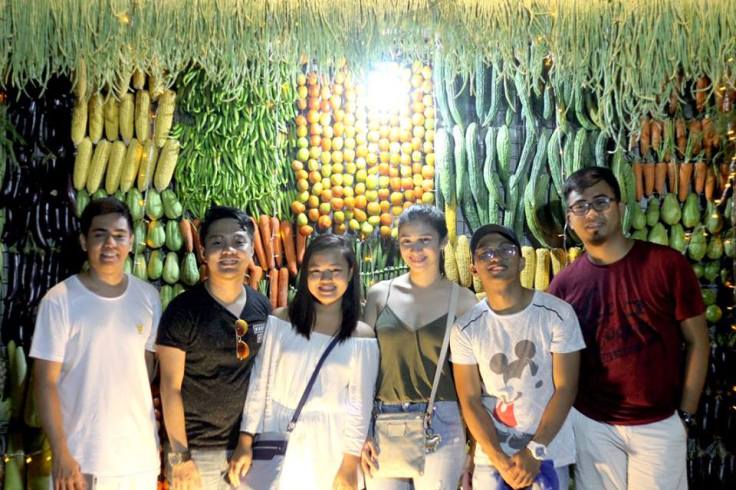Growing up Lucbanin
Being born and raised in Lucban, Quezon, you would think that I am already used to experiencing Pahiyas Festival, but the truth is, I am not, and I don’t think ever will be. As a native Lucbanin, this kinda feels like a summer version of Christmastime to me (i.e., lots of food on the table, lots of happy people celebrating, etc.), and who the heck gets used to the feeling of Christmas approaching? No one.

When I was younger, I remember going to my uncle’s house to help prepare for the festival. The most common Pahiyas decoration was kiping (read as kee-ping). In case you don’t know, kiping is that colored leaf-shaped rice wafer usually hung together to form a chandelier of kipings called Arangya. (And, yes, it is edible!)
Here’s a Youtube video of Drew Arellano (for Biyahe ni Drew) making kiping:
My job was to help peel the dried kipings off the leaves, collect them all, and bring them to those who were assigned to put buntal string on it and assemble them into an Arangya. It was kind of a tedious work, but it was also fun, especially for a kid like me. By the end of the day, my uncle would give me P10. Child labor! Hahaha jk.
The Real Essence of Pahiyas + Pahiyas Awards
The Pahiyas Festival proper starts on May 15th with a 6AM mass dedicated to San Isidro Labrador, followed by a procession. The priest goes through the whole Pahiyas route to bless all the houses and the farmers’ agricultural produce. What people don’t know is that this is the real essence of Pahiyas—blessing the farmers’ produce for a whole year of good harvest, and this is exactly what Lucbanin farmers have been doing even before it became an official festival in the early 1960s.
It should be noted that although the main festival is celebrated every 15th of May, the festival-related activities are started almost a week prior to that. Usually, there are singing contests (e.g., The Voice of Lucban), Parikitan contest (showcasing native Lucbanin dresses made by Lucbanin designers), and Mutya ng Lucban, among others. Then, at around 2 PM on the day of the Pahiyas Festival itself, these contest winners usually parade around town, alongside other local beauty queens and government officials. This is also the local government’s way of showcasing the beauty of the Lucbanin culture by including Pansit Habhab carts, carabaos, and higantes—everything that shows what Lucban is all about.
The Pahiyas winners are identified at around the same time the parade starts, sometimes even earlier than that. When I was younger, the main prizes were only given to the grand winner, and three runners-up; special awards were sometimes given, sometimes not. However, as the tourism grew, and the number of sponsors increased, the prizes given to the winners were eventually increased. Even the prizes, winners, and types of special awards were also increased. Consolation prizes are even categorized into P5,000, P10,000, P15,000, and P20, 000.
There are so many special awards given every year, but some of the popular ones include: Gawad Luntiang Ani (won by the house best decorated with mostly fruits and vegetables), Gawad Gintong Ani (won by the house best decorated with mostly palay), Best Anok (best moving scarecrow), Best Arangya (best kiping chandelier).
The unspoken rule: if you use non-indigenous materials (e.g., plastic, styrofoam, etc.), even if it’s beautifully decorated, you’ll have close-to-zero chance of winning. Everything has to be made out of agricultural produce and/or indigenous materials, and has to be made from scratch (which means that banig (handwoven mats), when used as design to cover the walls, are seen as shortcut decorations and does not merit high score).
At night, there’s another round of competition: the Kutitap awards. Houses that are best decorated with lights are given prizes.
If you ask me how much the government spends on just the prizes alone every year, I’ll say maybe around P5 million, I’m not sure. Maybe more than that, maybe slightly less.
Tip: if you want to take pictures without many people crowding on the houses, I suggest you do it before noontime (around 10 AM, when there’s not so many people yet). Or maybe earlier than that, if you can. The worst time is probably around 2 to 5 PM, because everyone’s out to watch the parade. If you want to see the Kutitao awardees, the best time would be 9 PM onward. (As Lucbanins, we’re sure there’ll be less people at midnight, so that’s when we take pictures, but that’s only because we have the luxury to do it that late because we live nearby. Haha!)
Pahiyas 2017*
For this year, since Pahiyas Festival was on Monday, the number of tourists was noticeably lower. The Pahiyas route was also shorter. Nonetheless, it was still fun!
The following pictures are taken not by me, but my friends. I just wanted to include these in here. Thanks, Archie and Monica!














I would love to experience Pahiyas again. And it seems maganda din yata yung mga decorations sa gabi.
LikeLiked by 1 person
Hi, Red Hoodie.
Try going again next year! It will be fun, for sure. Isa sa mga inaabangan ng mga tao ang Kutitap awards. Kaso, yung ibang tourists since one day lang sila, umuuwi na sila bago mag-gabi. So they’re actually missing out on half of the fun. Haha!
LikeLike